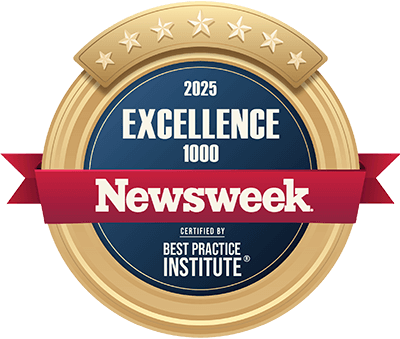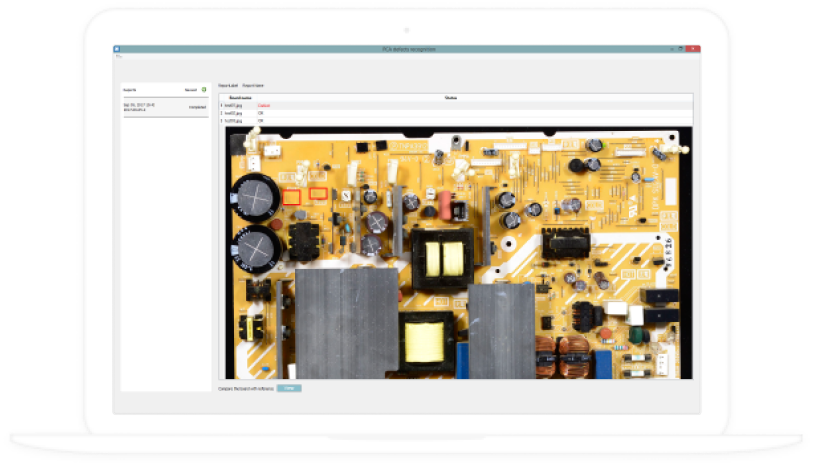Business Automation Services
Fast and Error-Free Business Processes
In software development since 1989, ScienceSoft offers full-scale business automation services to help companies streamline the fulfillment of repetitive tasks, reduce human error, and create full visibility into business processes
Business process automation is a way to reduce manual efforts, eliminate human-induced errors, and overall speed up the process by automating rule-based tasks. At ScienceSoft, we analyze target business processes thoroughly to offer viable automation scenarios and ensure the success of BPA projects.
ScienceSoft uses a range of solutions to enable business process automation:
- Workflow automation solutions based on ready-to-use platforms and tools, like Microsoft solutions, ServiceNow, Adobe, and others.
- Custom solutions tailored specifically to a company's process automation needs.
- Self-service portals across industries and business functions.
- Data-driven solutions for different business needs, from self-service analytics to AI-powered operations.
- Cloud services and products from AWS, Microsoft Azure, and Google Cloud.
Business Automation Use Cases ScienceSoft Covers
By industry
By business function
Cost Calculator for Business Automation Services
Please answer a few simple questions to help our experts better understand your business needs and calculate your quote quicker.
Thank you for your request!
We will analyze your case and get back to you within a business day to share a ballpark estimate.
In the meantime, would you like to learn more about ScienceSoft?
- Project success no matter what: learn how we make good on our mission.
- 4,200+ successful projects: explore our portfolio.
- 1,400+ incredible clients: read what they say.

BPA vs. RPA: What’s the Difference?
The terms “business process automation” and “robotic process automation” are often used interchangeably. However, there is a clear difference between them:
The Role of BPA in Digital Transformation
Business process automation is the primary driver of the following digital transformation goals:
Increased productivity at no extra cost
Process automation replaces manual work, which allows employees to do more in less time. The process is carried out faster and at a large scale without the need to hire more people to perform it.
Higher quality of work
Most of the rule-based business automation workflows (such as automated data transfer, scheduling, or approvals) eliminate the risk of human error, improving the quality of process output.
Data-driven decision-making
Automating data governance and analytics processes enables real-time visibility into business performance, leading to improved decision-making that is based on facts, not speculations.
Scalability of business processes
When BPA architecture is designed for scalability, the automated process will not halt even if the volume of incoming data soars. For example, adequately automated inventory management would prevent business disruptions in case of a spike in inventory turnover.
Improved customer experience
Automation increases the efficiency of processes that directly impact customer experience, such as order management, customer service, and customer feedback processing.
Guaranteed legal compliance
Automating sensitive data collection, storage, and distribution ensures compliance with relevant regulations (e.g., GDPR, HIPAA) without constant manual control.
How AI enables intelligent business automation
Generally speaking, there are two ways to design process automation solutions: using algorithms or introducing AI. Algorithm-based BPA relies on a pre-defined set of triggers and rules and executes strictly what is programmed. If we want the algorithm to work another way, we need to code new rules.
On the contrary, artificial intelligence (AI) can process unfamiliar input and adapt to it, making it a perfect tool for dynamic pattern recognition and anomaly detection. AI’s ability to process unstructured data powers personalized recommendation engines, financial fraud detection systems, and intelligent production control solutions.
Still, it doesn’t mean AI is the best choice for every case: such software requires more resources to build and train to the desired level of accuracy. When working on BPA with our clients, we always strive to find the most efficient and cost-effective solution, not the most advanced one.
ScienceSoft as a Mature Business Process Automation Company
- Decades-long experience in advanced techs: cloud, AI/ML, big data, blockchain, IoT, AR, VR.
- ISO 9001-certified quality management that allows us to implement projects fully meeting our clients' quality expectations.
- Guaranteed security of the customers’ data we access proved by ISO 27001 certificate.
- Compliance with HIPAA, GAMP, PCI DSS, and other regulations.
- Business automation specialists knowing processes and regulations of 30+ industries.
Our awards, certifications, and partnerships
Benefits of Business Process Automation Services with ScienceSoft
Focus on value of business automation
We don’t offer automation for the sake of it. Our business automation consultants thoroughly analyze your business processes and suggest the most suitable use cases for automation.
Holistic approach to business automation
We start with mapping out your business processes to establish a clear picture of each process step and identify potential bottlenecks. We can also redesign the processes to ensure their efficient automation.
Strong data security
Applying 114 security controls required by ISO 27001, we safeguard the information assets that we access during the business automation project.
Optimized implementation time and costs
We apply CI/CD and DevOps methodologies to reduce the time of business automation software implementation. Besides, we leverage low-code development tools where applicable to achieve fast and cost-effective business automation.
Technologies We Apply in Business Process Automation Services
ScienceSoft’s Offerings on Business Automation Services
Business process automation consulting
- Analyzing your enterprise automation needs and evaluating your current business processes.
- Defining business processes suitable for automation.
- Creating a process orchestration and automation strategy.
- Prioritizing features for a business automation system.
- Designing automated workflows.
- Advising on suitable automation technologies and solution type.
- Suggesting useful integrations (e.g., enterprise systems, data sources, email services).
- Drawing a business automation project plan.
Business automation solution implementation
- Analyzing your business automation needs and current business processes.
- Eliciting technical requirements for a business automaton solution.
- Redesigning business processes to adjust them to automation.
- Choosing a solution type and a suitable tech stack to build the solution.
- Designing the solution’s UX and UI.
- Developing the solution and integrating it with enterprise systems, data sources, email services, etc.
- Quality assurance and support of the solution.
- Comprehensive user training.
Business automation solution evolution
- Evaluating the current business process automation solution and detecting bottlenecks.
- Conducting feasibility studies and solution ROI calculation.
- Suggesting and implementing new functional modules, individual features, UX/UI improvements, etc.
- Solution re-architecting and modernization.
- Adding new integrations with third-party software.
- Introducing advanced technologies (e.g., image analysis, IoT) to the solution.
Why It’s Time to Leverage Business Automation
Businesses can lose up to 20 to 30% in revenue each year due to inefficient processes, low productivity and high costs, so more and more companies automate business processes to get benefits, such as:














